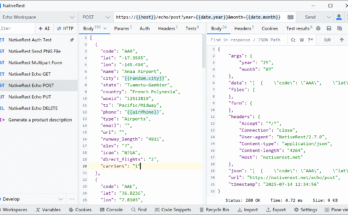Technology is no longer a niche domain tucked away in labs or reserved for engineers. It pulses through every corner of our lives—quietly humming in our pockets, lighting up our homes, powering economies, and even influencing how we think and feel. But amidst the noise of constant innovation, viral launches, and app updates, it’s easy to forget that at its core, tech is deeply human.
From ancient tools to artificial intelligence, technology has always been about extending human potential. But in today’s hyperconnected world, where every moment is monitored, optimized, and digitized, the question is no longer just “what can tech do?” but “what should tech do?” And more importantly, how can it continue to evolve without leaving the human experience behind?
The Digital Mirror:
-
Our Tools, Our Selves
Technology, at its best, is a mirror. It reflects our needs, our values, our hopes, and even our flaws. The smartphone is a perfect example—part productivity hub, part escape room, part memory box. It serves our need for connection while often isolating us. It enhances our efficiency while sometimes draining our presence.
This paradox defines much of modern technology. We create machines to make life easier, then struggle to unplug from them. We automate to save time, then use the time we saved to consume more content, not to reflect or rest. Our tools evolve faster than our ability to make sense of them, and in doing so, they shape the very essence of our daily lives.
-
Emotion in the Machine
With the rise of emotionally intelligent AI, facial recognition, and sentiment analysis, technology is beginning to understand us on a level once reserved for close human relationships. Machines are learning to read our tone, mimic empathy, and even compose music or write stories that evoke real emotion.
But this emotional capacity raises complex questions. Can machines truly understand emotion, or are they simply trained to mimic it convincingly? Does that distinction matter to a user who finds comfort in an AI therapist or a chatbot companion? The line between artificial and authentic is blurring—and it’s changing the way we interact with technology, and with each other.
The Innovation Curve:
-
The Unrelenting Pace of Progress
Moore’s Law once predicted the doubling of computing power every two years. That rhythm now feels quaint. The pace of innovation has become exponential, with breakthroughs in one field rippling into another—AI informs healthcare, blockchain transforms finance, and quantum computing promises to rewrite the rules of physics itself.
But this speed comes with its own gravity. As technology accelerates, so does disruption. Industries rise and fall. Skills become obsolete. Entire career paths vanish or morph within a few years. For individuals and institutions alike, adaptability is no longer optional—it’s survival.
Yet, there’s a growing recognition that not everything needs to move faster. Some of the most meaningful innovations—those that prioritize equity, privacy, and sustainability—require intentional slowing down to ask better questions and build stronger foundations.
-
Innovation with Intention
The tech world is slowly shifting from “move fast and break things” to a more mindful mantra: “move thoughtfully and build well.” This doesn’t mean halting progress but rather rethinking what progress means. Is it just about better specs and slicker interfaces, or about deeper societal impact?
Startups and tech giants alike are being challenged to design with ethics in mind. Whether it’s algorithms that avoid bias, platforms that promote digital well-being, or devices that respect user consent, the focus is shifting toward technology that doesn’t just do more, but does better.
The Future Is Now:
-
Artificial Intelligence
AI is no longer a futuristic fantasy. It’s in our search engines, our cars, our streaming platforms, and increasingly, in our creative processes. But beyond smart assistants and predictive texts lies the true power of AI—the ability to analyze, learn, and act on massive datasets in real time.
In medicine, AI diagnoses diseases earlier and more accurately than ever before. In climate science, it models complex environmental systems to predict and prevent disaster. In education, it personalizes learning for every student’s pace and style. AI is not just learning about the world—it’s helping us understand it in new ways.
However, this power also demands oversight. How do we ensure AI reflects our best selves, not our biases? Who holds the leash when machines start making decisions on our behalf? These are the questions we must answer now—not later.
-
The Rise of Augmented and Virtual Realities
The boundaries between digital and physical are dissolving. AR and VR aren’t just tools for gamers or futurists anymore—they’re becoming mainstream mediums for communication, work, education, and even therapy.
Imagine attending a virtual concert with friends from five continents or exploring ancient ruins in 3D from your living room. AR overlays enhance our physical spaces with contextual data, turning everyday experiences into rich, interactive moments. These technologies are redefining immersion and presence—two things that seemed inherently tied to physical space.
As hardware becomes lighter, faster, and more affordable, the spatial web—the convergence of digital content and physical world—will reshape how we learn, play, and connect.
Tech and Ethics:
-
Privacy in the Age of Surveillance
Data is the new oil, but unlike oil, it’s personal. Every click, swipe, and search leaves a trace. While this data fuels convenience—from customized feeds to predictive navigation—it also poses immense risks.
The question isn’t just how data is collected, but why, by whom, and what happens next. As governments and corporations build ever-larger digital profiles, the need for transparency, consent, and regulation grows urgent. People are beginning to demand digital dignity—control over their information and autonomy over their online selves.
Privacy isn’t just a policy issue—it’s a human right, and tech must evolve to protect it.
-
The Moral Code of Coders
Tech doesn’t create itself. Behind every algorithm is a human—a developer making choices. And those choices, whether conscious or unconscious, influence millions. As tech becomes more influential, so too must the ethical responsibility of its creators.
From inclusive design to accessible interfaces, from responsible sourcing of materials to eco-friendly production, ethics must be embedded in the DNA of innovation. It’s not enough to ask “Can we build it?” The better question is: “Should we?”
Tech education is beginning to reflect this shift. Future engineers are being taught not just how to code, but how to think critically about the consequences of their code. This is the beginning of a more accountable digital future.
The Human Side of the Digital Age:
-
Technology as a Connector
For all the warnings about screen time and digital isolation, technology has also been a powerful unifier. During global crises, it has enabled remote work, virtual gatherings, and shared resilience. It has connected families, supported mental health, and opened up new forms of creativity and expression.
Apps help people learn languages, start businesses, meet soulmates, and advocate for justice. It’s not about tech being good or bad—it’s about how we use it. When designed and wielded with empathy, technology becomes a bridge, not a barrier.
-
Reclaiming Balance
As we move further into the digital era, the call for digital well-being grows louder. People are seeking ways to reclaim presence, prioritize mental health, and set healthier boundaries with their devices.
From minimalist interfaces to screen-time reminders, the trend is clear: people want tech that supports life—not steals it. The future isn’t about unplugging entirely, but about reconnecting to what matters most. The next wave of innovation may not be more features, but better focus.
Conclusion:
Technology is neither our enemy nor our savior. It’s a tool—a powerful one—that reflects and amplifies who we are. The future of tech is not written in code alone. It’s shaped by conversations, values, imagination, and responsibility.
As creators, users, and dreamers, we each have a role in shaping that future. Whether it’s choosing more ethical products, questioning the intent behind algorithms, or simply using tech to enrich rather than escape life, we participate in the evolution of the digital age.
And as we continue this journey, the goal is not just smarter tech—it’s a smarter, kinder, more connected world.




